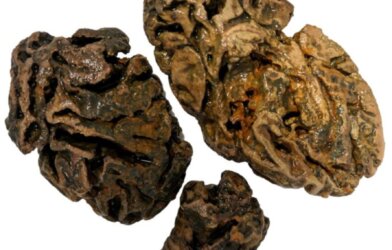When someone feels the first nasty effects of a bug – such as chills, fever or fatigue – most people think the immune system is kicking into gear. A new study debunks that theory, showing that it’s the brain that controls this process.
Scientists at Harvard University have identified small group of neurons in the brain that control symptoms of sickness. The nervous system talks to the immune system to work out that the body has an infection before the symptoms manifest themselves. They hope knowledge of this process could be used to reverse it in humans when the symptoms’ effects, such as a dangerously high fever or a worryingly stark loss of appetite, could damage someone’s health.
These reactions are normally healthy, but when they become too extreme they can be dangerous and impede recovery. The findings could also help people such as chemotherapy patients, who have a very low appetite, but doctors had previously known little about how best to help them.
The neurons, which have not previously been described, are found in an area of the hypothalamus, a part of the brain that controls key functions that keep the body in a balanced, healthy state. These neurons have receptors that can detect molecular signals coming from the immune system, which most neurons cannot do.
The neurons sit right next to the blood-brain barrier, which helps circulate blood to the brain. Cells in the blood-brain barrier are in contact with both blood and the immune system and these cells, which are not neurons, secrete cytokines and chemokines that, in turn, activate the neurons that the researchers found.
The research began as an attempt to look at the “fever effect” in people with autism. This is a phenomenon where autistic people display fewer signs and symptoms of their condition when they have a high temperature.
The team wanted to find the neurons which cause a fever and link them to the neurons that are involved in social behavior. Instead, the team found neurons which are activated when someone is sick.
Lead study author Dr. Jessica Osterhout zeroed in on about 1,000 neurons in the ventral medial preoptic area of the hypothalamus because of their location next to the blood-brain barrier. She injected mice with pro-inflammatory agents which mimic bacterial or viral infection and analysed which parts of the brain lit up in scans.
The team then investigated the connections between the different groups of neurons. They could activate or silence these neurons on command in the mice’s brains and could pin down their function by seeing what happened. By using these tools, they could increase body temperature in the mice, increase warmth-seeking behavior, and reduce appetite.
The neurons they describe project to 12 brain areas, some of which are known to control thirst, pain sensation, and social interactions. This suggests other sickness behaviors may also be affected by the neuron activity there.
Scientists also found this group of neurons became more active when molecules from the immune system gave off more signals, which suggests the brain and immune system were communicating with each other in the ventral medial preoptic area of the brain and the blood-brain barrier right next to it.
“It was important for us to establish this general principle that the brain can even sense these immune states. This was poorly understood before,” Dr. Osterhout explains in a statement. “If we know how it works, perhaps we can help patients who have difficulty with these kinds of symptoms, like chemo patients or cancer patients, for example, who have a very low appetite but there’s really nothing we can do for them.
“As a neuroscientist,” she continues, “we often think of neurons activating other neurons and not that these other paracrine type or secretion type methods are really critical. It changed how I thought about the problem.”
The team now wants to explore other areas the neurons they found project to and use their findings to understand the “fever effect” in autistic people which they originally set out to probe.
The findings are published in the journal Nature.
Report by South West News Service writer Gwyn Wright







-392x250.jpg)



